All Articles
18 Restaurant Concepts and How to Choose One
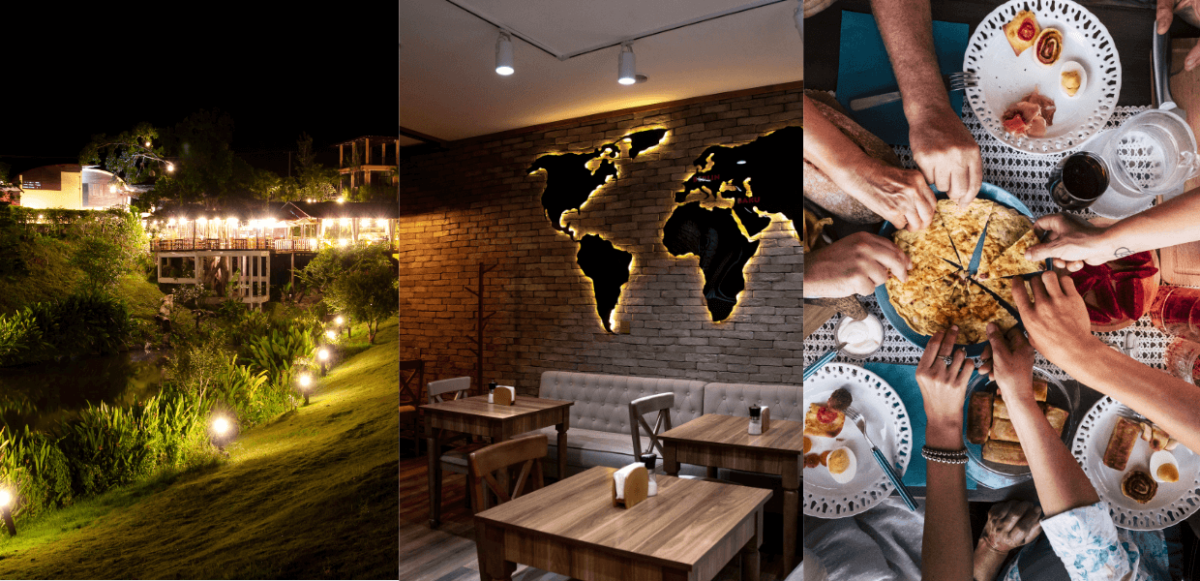
The first step in almost every restaurant opening plan is choosing a concept. Knowing what you want to open is essential to starting your venture. This article is designed to guide you through this crucial first step. I will begin by explaining what a restaurant concept is and then outline its components. Following that, I will provide tips to help you develop your concept, and finally, I will share some inspiring restaurant ideas to spark your creativity.
What Is a Restaurant Concept
The restaurant concept is, simply put, its identity, comprising various elements such as the type of restaurant, the food served, the name, the type of service, and other aspects. The concept of your restaurant is essential; it is the central factor that determines every subsequent decision you make when opening your restaurant.
Imagine for a moment that you have chosen a fine-dining restaurant that serves Italian specialties in the United States as your concept. By selecting this concept, you have already chosen a few other things for your restaurant. The menu, of course, would consist of upscale fine-dining dishes such as Carpaccio di Manzo, Polpo alla Griglia, Tagliolini al Tartufo, and other exquisite offerings. When it comes to the type of service, it is also set: full table service with strict etiquette rules. The decor should reflect both Italian heritage and an atmosphere of elegance and luxury. Thus, it is clear that a restaurant concept influences how you will approach other decisions related to your restaurant.
Since choosing the right concept for your restaurant is so crucial, it’s essential to get it right. I will provide some tips for this, but first, it is necessary to understand all the elements that comprise a restaurant concept. Let us start by examining these components.
Components of a Restaurant Concept
I mentioned that a restaurant’s concept is actually its identity; it is clear that when we talk about something’s identity, we are referring to several elements that make up this identity. Regarding restaurant identity, some elements have been mentioned briefly. Now, it is time to introduce each component and how it complements the restaurant concept.
- Unique Selling Proposition (USP) – A unique selling proposition is what differentiates you from your competitors. When considering this aspect, you must ask yourself what is distinctive about me that, as the name suggests, will drive sales to your customers. It is obvious and needs no further explanation why the element that makes you different and appealing to customers is an important part of your restaurant concept.
- Target Audience – Another part of your restaurant’s identity is who it caters to. This is the target audience. For example, while family-style restaurants mainly serve families, fast-food restaurants are most popular among the younger demographic.
- Name – The name of something or someone is essential to identifying that thing or person. The same is true for restaurants. Your restaurant’s name is an essential part of its concept.
- Decor and Ambiance – The restaurant’s identity is also reflected in its decor and ambiance, as seen in the example of Italian fine dining above. The lighting, the music, the art—everything must align with and reflect the concept.
- Service Style – Some restaurants offer a specific type of service, while others combine different styles. However it may be, service style is an integral part of a restaurant’s concept.
- Menu – Perhaps the essential element in defining a concept is the menu. Most restaurants focus on a particular menu item or a specific cuisine when creating their concept.
- Location – While location is not always a crucial component of a restaurant’s concept, it can become central when the setting significantly contributes to the overall ambiance. For instance, at The Labasin Waterfalls Restaurant in Villa Escudero, Philippines, where diners enjoy their meals at the base of a waterfall, the location stands out as perhaps the most defining aspect of the restaurant’s identity.
How to Choose Your Restaurant Concept
By now, the meaning of a restaurant concept and its key elements should be clear. With that foundation in place, it’s time to offer guidance on selecting the right concept for your restaurant.
- Make your restaurant’s identity a reflection of your own – In an era where authenticity is highly valued, your establishment mustn’t be perceived as merely profit-driven but as a genuine expression of your passions and experiences. For instance, if your trip to Naples inspired you, consider opening a Neapolitan pizza restaurant to share the culinary experience that captivated you. This approach adds authenticity and provides a compelling story to market your restaurant.
- Choose the type of restaurant first, then refine your concept – The type of restaurant is a fundamental aspect of its overall concept. Begin by deciding on the type you want to open, and then enhance that choice with additional elements that define your restaurant’s unique identity.
- Establish your restaurant’s USP – To define your restaurant concept further, consider developing a unique selling proposition (USP). For example, if you’ve decided to open a café rather than a restaurant, you’ll need to stand out among the many cafés in your area. Creating a distinctive identity will help set your café apart and attract customers, and this is the essence of establishing your USP.
- Consider the other elements of your restaurant concept – As mentioned earlier, various factors contribute to your restaurant’s identity, such as the target audience, location, menu, and name. Ensure that you address each of these elements or at least some of them, and explain how they contribute to shaping the restaurant’s overall identity.
- Ensure that all elements of your concept remain consistent – This may seem extreme, but imagine opening a fast food restaurant and then deciding to serve soups alongside the fast food menu to be unique. This approach could end up being a disaster.
Restaurant Concepts Ideas
1. Multi-Concept Venues
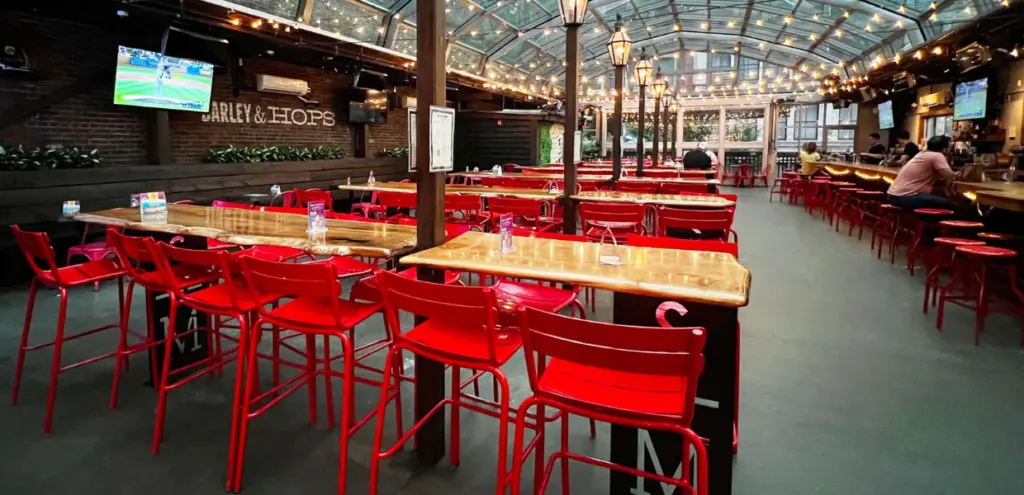
Combining multiple concepts within a single location offers different dining experiences. This approach caters to various tastes and preferences, maximizing the use of space and potentially increasing revenue.
Examples:
- Sienna Mercato (Pittsburgh, PA): A three-story restaurant offering different dining experiences on each floor, from a meatball emporium to a rooftop bar.
- Fifth Frame Brewing Co. (Rochester, NY): Combines a coffee shop, brewery, and lunch spot under one roof.
2. Farm-to-Table Dining

Partner with nearby farms to prioritize fresh, locally sourced ingredients. This concept emphasizes transparency and sustainability, giving diners confidence that their food is fresh and supporting local agriculture.
Examples:
- Blue Hill at Stone Barns (Pocantico Hills, NY): A pioneer in farm-to-table dining, offering a menu based entirely on what is harvested that day.
- Chez Panisse (Berkeley, CA): Known for its dedication to sourcing local, organic ingredients from nearby farms.
3. Pop Culture-Themed Restaurants
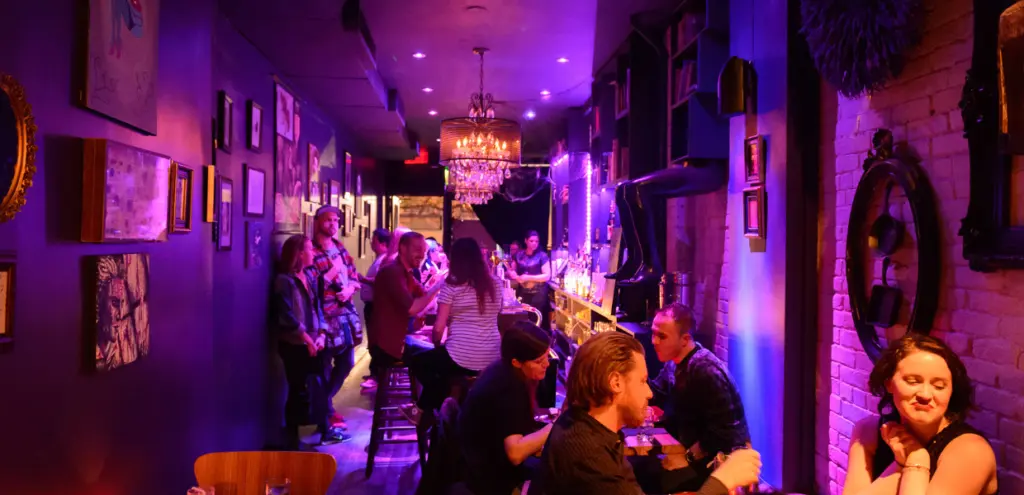
Draw in fans by designing your restaurant around a popular TV show, movie, or cultural icon. This concept leverages nostalgia and fandom to create a unique dining experience.
Examples:
- Saved by the Max (West Hollywood, CA): A diner themed after the TV show “Saved by the Bell.”
- Beetle House (New York, NY): A Tim Burton-themed restaurant featuring décor and menu items inspired by his films.
4. Locally-Inspired Menu
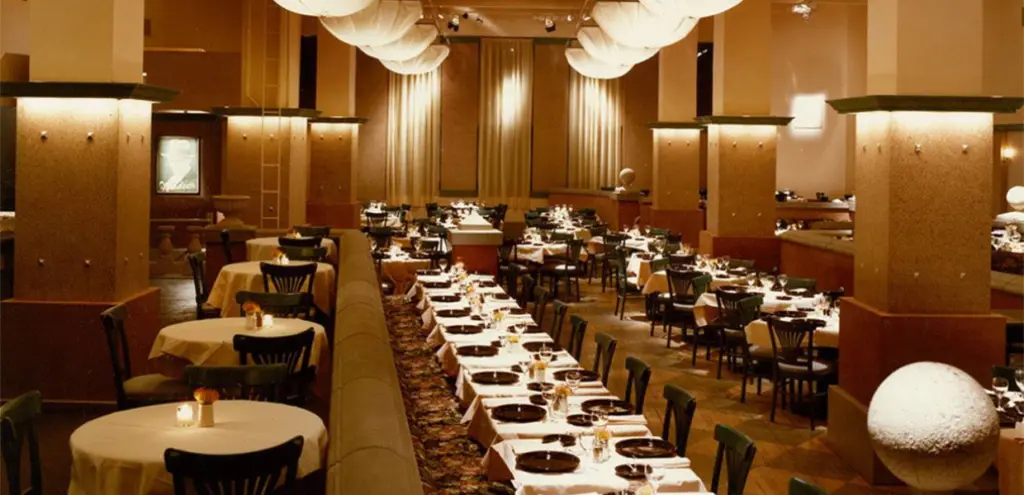
Create dishes that reflect the local culture, history, or seasonal ingredients. This concept emphasizes a connection to the community and offers diners an authentic taste of the region.
Examples:
- No Joke Smoke BBQ (Swansea, MA): Uses seasonal sauces and locally sourced meats to reflect New England’s culinary traditions.
- Gotham Bar and Grill (New York, NY): This restaurant incorporates New York’s diverse culinary influences into its menu.
5. Historic Building Transformation
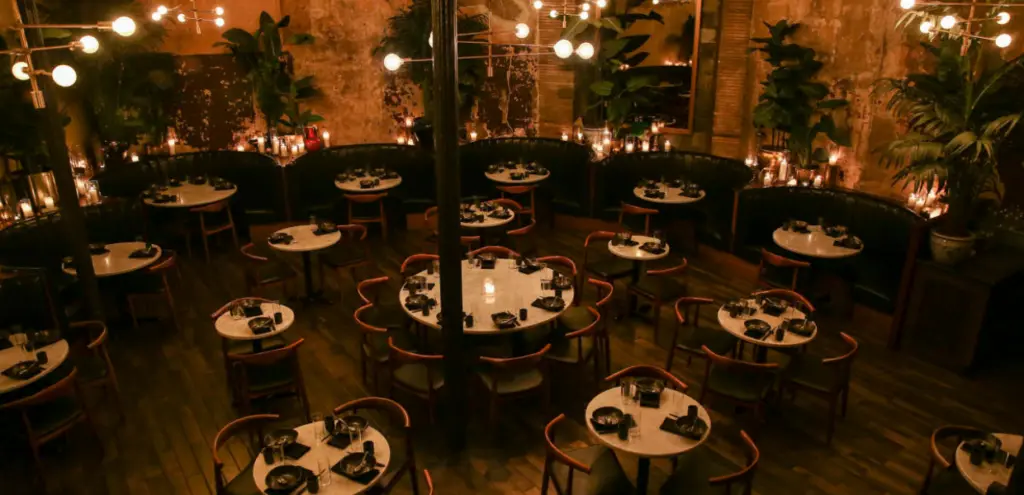
Use a building’s unique history to shape your restaurant’s concept. This will create a space that celebrates the past while offering a contemporary dining experience.
Examples:
- Chinese Tuxedo (New York, NY): Located in a former Chinese opera house from the 1890s, the restaurant pays homage to its history.
- MBAR (Mystic, CT): This gastropub is housed in a historic gas station and blends industrial charm with modern amenities.
6. Nature-Integrated Dining
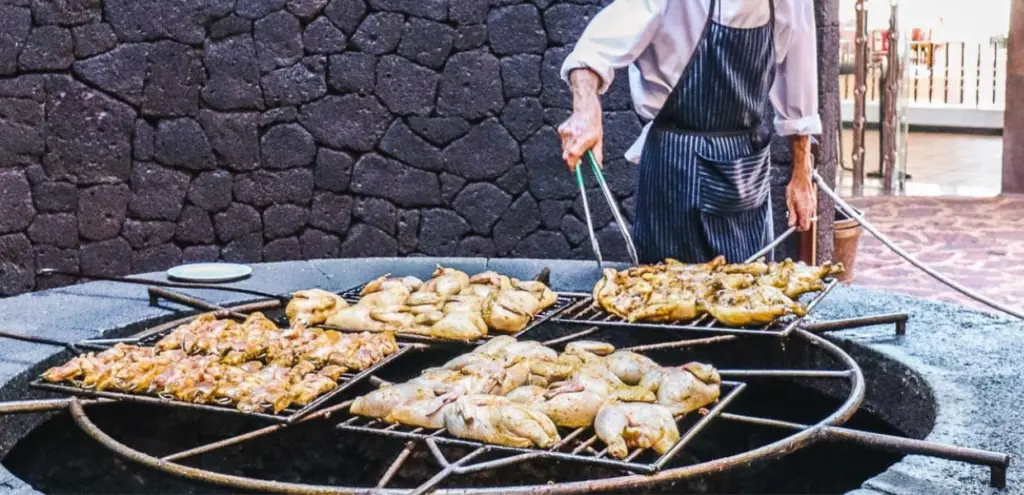
Use natural surroundings to enhance the dining experience, whether it’s a restaurant with a breathtaking view, one built into a natural setting, or one that uses nature itself for cooking.
Examples:
- The Rock Restaurant (Zanzibar, Tanzania): A seafood restaurant perched on a rock in the Indian Ocean, accessible by boat during high tide.
- El Diablo (Lanzarote, Spain): A restaurant that uses the heat from a dormant volcano to cook food.
7. Tech-Driven Experience
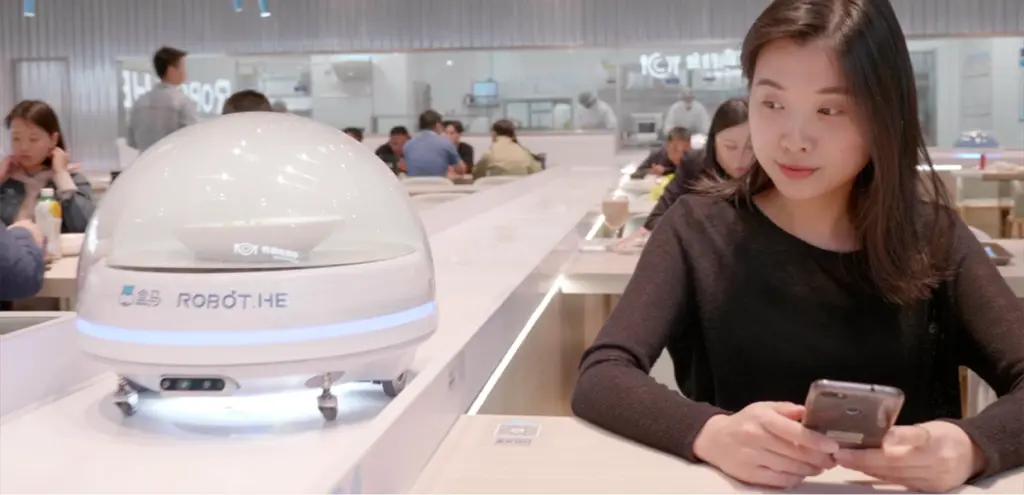
Elevate the dining experience by incorporating advanced technology, such as robots for cooking, serving, or even taking orders. This concept can reduce labor costs while providing diners with a unique and futuristic experience.
Examples:
- Spyce (Boston, MA): Features a robotic kitchen that prepares meals quickly and consistently.
- Robot. He (Beijing, China): A fully automated restaurant where robots cook and serve meals.
8. Immersive Decor
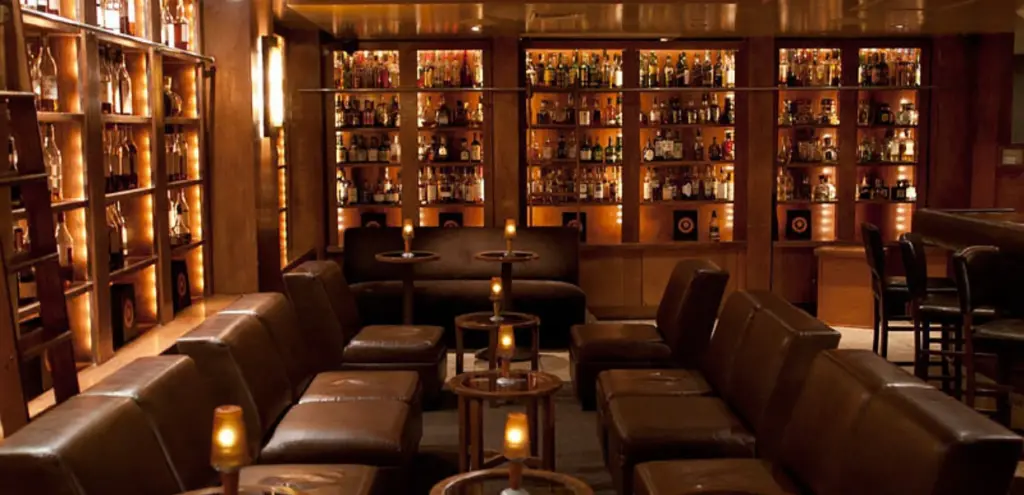
Transform your restaurant into a visual masterpiece where the décor tells a story or creates a mood that enhances the dining experience.
Examples:
- Brandy Library (New York, NY): A refined bar with a library theme where sommeliers fetch bottles from towering bookcases.
- Sketch (London, UK): A tea room known for its whimsical and eclectic interior design, blending art and dining.
9. Tasting Rooms
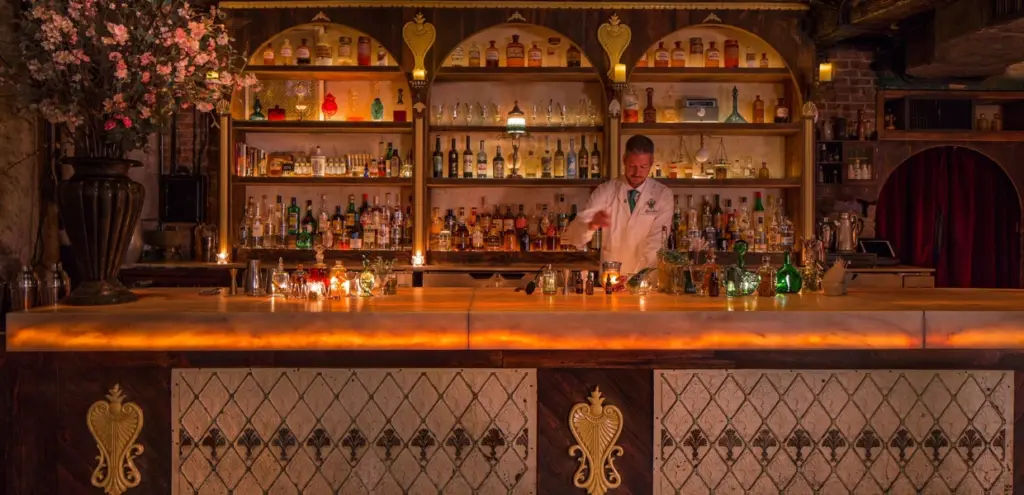
Offer specialized tasting rooms where guests can sample a curated selection of wines, whiskies, or other beverages. This concept appeals to connoisseurs and can be paired with educational events or exclusive tastings.
Examples:
- The Olde Mouldy (Somerville, MA): A pop-up whiskey tasting room offering a wide range of rare whiskies.
- Apotheke (New York, NY): A cocktail bar inspired by European apothecaries, offering unique, medicinal-themed drinks.
10. Treehouse Dining

Build your restaurant in a tree or incorporate treehouse elements to offer a whimsical and unique dining experience. This concept appeals to those seeking a blend of adventure and fine dining.
Examples:
- The Yellow Treehouse Restaurant (Auckland, New Zealand): Suspended in a Redwood tree, offering a breathtaking view and a one-of-a-kind dining experience.
- Soneva Kiri (Koh Kood, Thailand): It offers a treetop dining experience where food is delivered via a zip line.
11. Animal-Friendly Ambiance
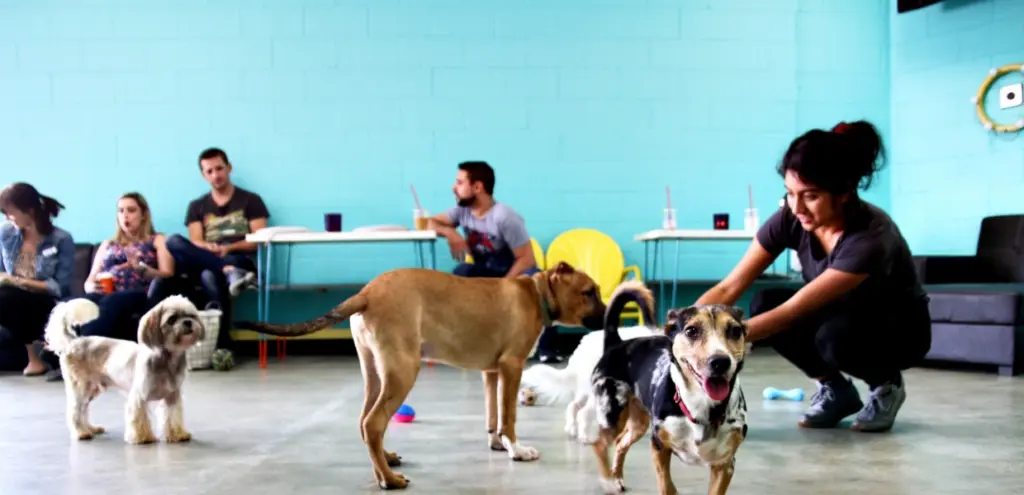
Attract pet lovers by creating a space where animals are part of the dining experience. This concept can range from pet-friendly patios to cafes dedicated entirely to cats or dogs.
Examples:
- Koneko Cat Café (New York, NY): A Japanese-inspired cat café where guests can enjoy coffee while interacting with adoptable cats.
- The Dog Café (Los Angeles, CA): Combines a café atmosphere with a dog adoption center, where patrons can meet and play with dogs.
12. Digital Detox Dining
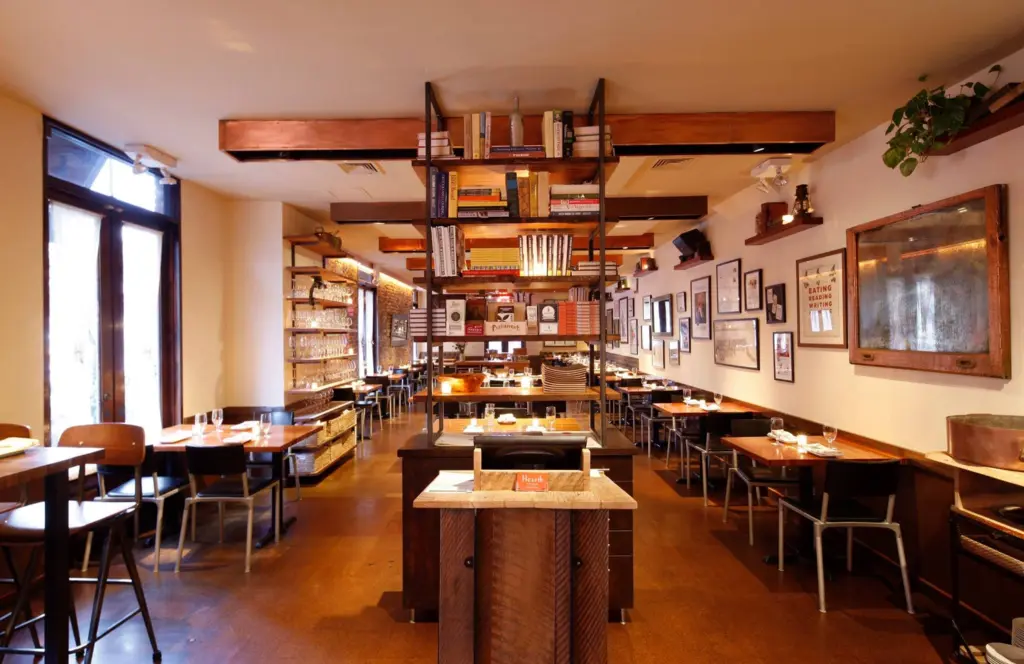
Ask guests to disconnect from their devices to create a space that encourages social interaction. This concept is perfect for fostering genuine connections in a tech-saturated world.
Examples:
- Hearth (New York, NY): Encourages guests to place their phones in a decorative box on the table during meals.
- Kitty Cohen’s (Austin, TX): A poolside bar where guests are encouraged to enjoy the moment without digital distractions.
13. Mysterious Ambiance
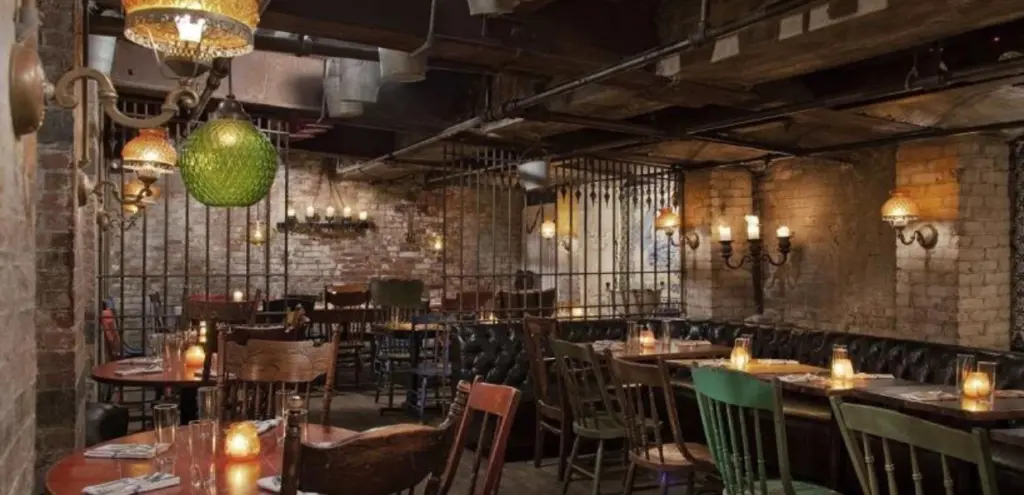
Incorporate hidden entrances, secret passwords, or speakeasy-style designs to create an air of mystery around your restaurant. This concept adds excitement and exclusivity to the dining experience.
Examples:
- Please Don’t Tell (New York, NY): A hidden speakeasy behind a phone booth in a hot dog shop.
- La Esquina (New York, NY): A hidden Mexican restaurant accessible through an unassuming deli.
14. Eco-Friendly Focus
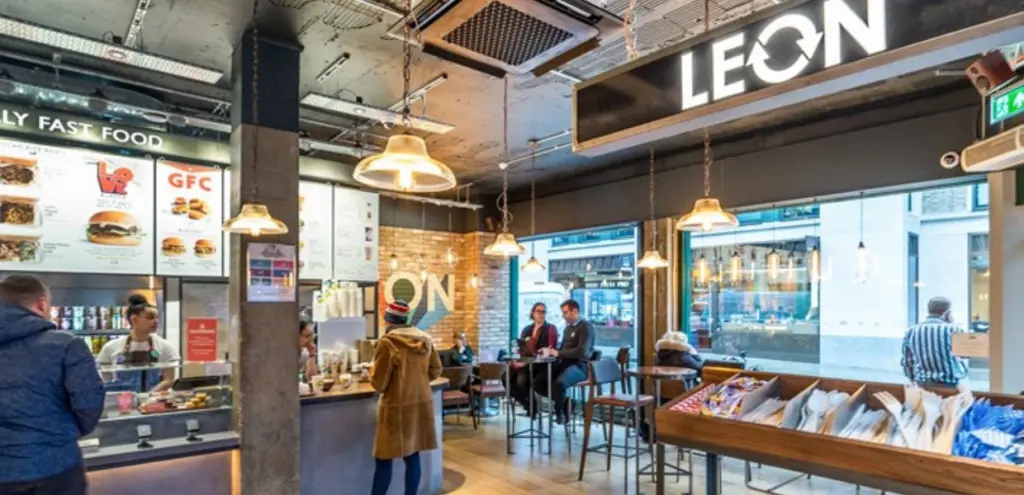
Center your restaurant’s mission on sustainability by using eco-friendly practices, such as compostable packaging, sustainable energy, and locally sourced ingredients. This concept appeals to environmentally conscious diners.
Examples:
- Leon (Various Locations): A quick-service chain focusing on “naturally fast food” with an eco-friendly approach.
- Zero Waste Bistro (New York, NY): A pop-up restaurant focused on sustainable practices and zero waste.
15. Build-Your-Own Meal
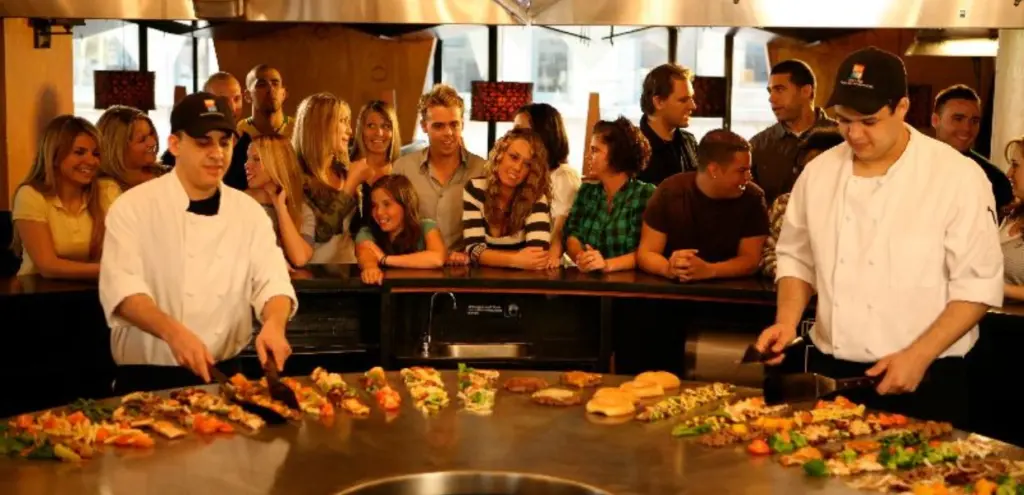
Give diners the power to customize their meals by selecting ingredients and watching their food prepared. This concept is famous for its interactive nature and the ability to cater to individual preferences.
Examples:
- Fire + Ice (Boston, MA): A grill concept where guests select their ingredients and watch as chefs prepare their meals.
- Blaze Pizza (Various Locations): Allows customers to build pizzas with a wide range of toppings.
16. Tea Pairings Instead of Wine
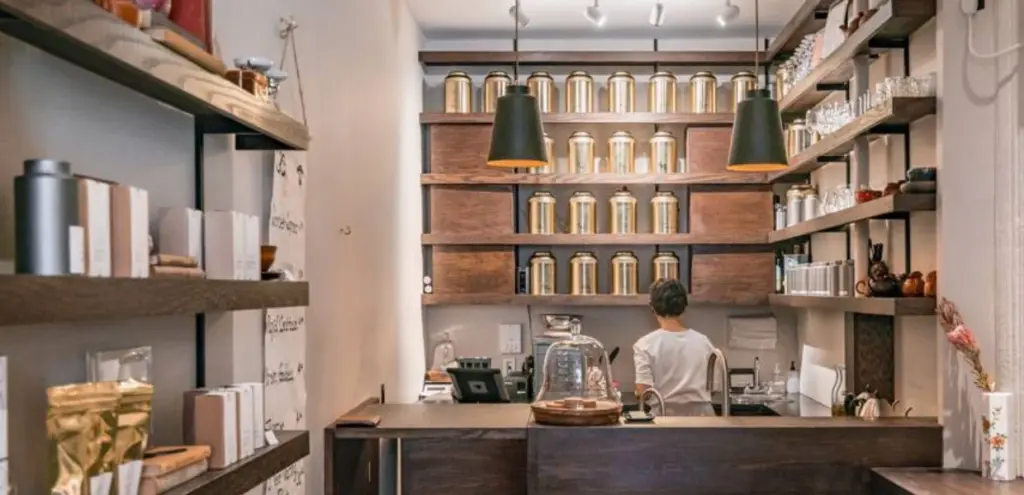
Offer a unique twist on traditional wine pairings by pairing dishes with carefully selected teas. This concept highlights the complexity of tea and its ability to complement different flavors.
Examples:
- Te Company (New York, NY): A Taiwanese tea room that pairs high-quality teas with a menu of small plates.
- Song Tea & Ceramics (San Francisco, CA): Specializes in rare and seasonal teas paired with a curated selection of foods.
17. Vegetarian or Vegan Ambiance
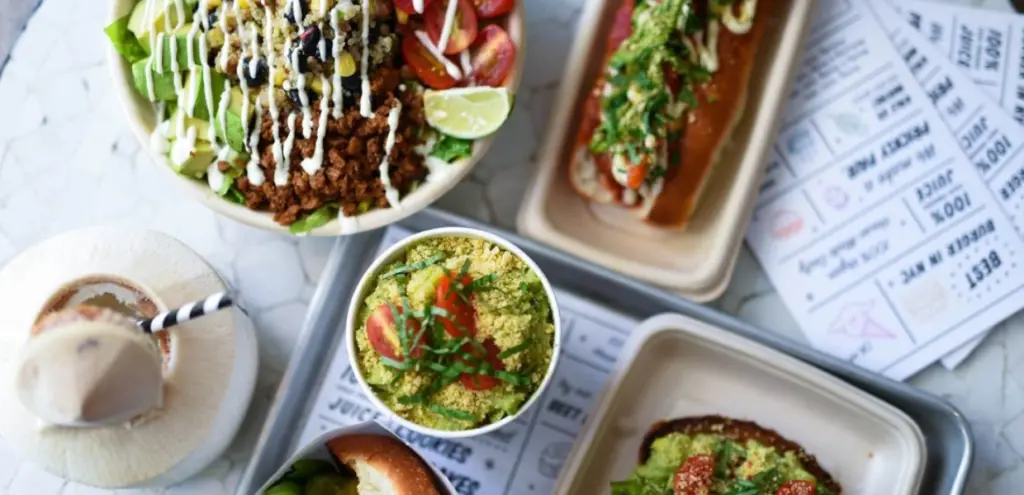
Create an ambiance and menu entirely focused on vegetarian or vegan cuisine, emphasizing the richness and diversity of plant-based dining. This concept appeals to health-conscious diners and those interested in sustainable eating.
Examples:
- By Chloe (Various Locations): A fast-casual chain offering an entirely vegan menu in a trendy, Instagram-worthy setting.
- Gracias Madre (Los Angeles, CA): A Mexican-inspired vegan restaurant with a chic, eco-friendly atmosphere.
18. Gourmet Food Trucks
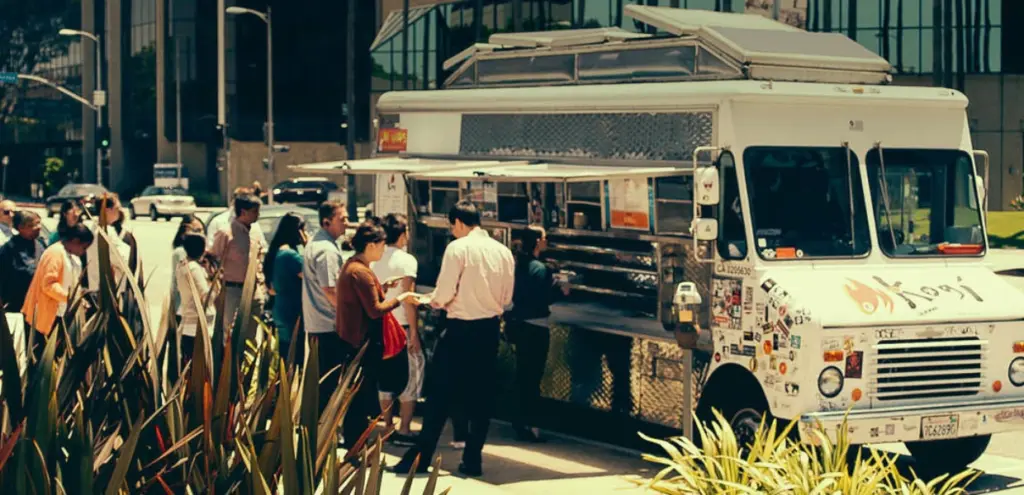
Elevate the food truck experience by offering gourmet cuisine on the go. This concept combines the convenience of food trucks with high-quality, chef-driven dishes.
Examples:
- The Lobos Truck (Los Angeles, CA): A gourmet food truck serving creative comfort food like mac ‘n’ cheeseburgers.
- Kogi BBQ (Los Angeles, CA): A pioneering food truck that blends Korean and Mexican flavors, serving gourmet tacos and burritos.
Conclusion
Your restaurant concept is its identity. As mentioned earlier, this identity includes various elements such as the name, type of restaurant, USP, location, and more. When defining your concept, draw on your experiences and carefully consider each component of your restaurant’s identity. With many ideas available, find inspiration and craft a unique and captivating concept that will win over your customers.
If this article has helped you understand what is a restaurant concept and how to choose one, and you think your friends will enjoy it as well, you are more than welcome to share the article.
 12 August 2024
12 August 2024 9 min read
9 min read

